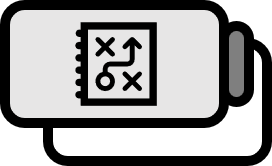Codon and Amino Acid Genetic Code in Bioinformatics
Definition
- A unit consisting of three bases of DNA in sequence is called a triplet code.
- The triplet code of transcribed mRNA, according to the Central Dogma, is called a codon.
- Chemically, a molecule that includes an amino group and a carboxyl group, and which serves as the building block of proteins, is called an amino acid.
- The correspondence between the sequence of codons and amino acids is called the genetic code.
Explanation
The genetic code and genetic cipher indicate which codon signifies which amino acid in a nucleotide sequence. The term genetic cipher is used because it is difficult to understand which proteins will be synthesized just by looking at the sequence of bases, and since the actual DNA has no intention of hiding that information, it cannot be considered a cipher system. Thus, calling it encoding would be more appropriate.
 1 Transcribed mRNA comes out of the nucleus and meets the ribosome, a cellular organelle. The ribosome reads the mRNA and starts gathering amino acids from the start codon AUG, methionine, and stops synthesizing proteins upon reaching the stop codon. This process is precisely what is referred to as translation in the Central Dogma.
1 Transcribed mRNA comes out of the nucleus and meets the ribosome, a cellular organelle. The ribosome reads the mRNA and starts gathering amino acids from the start codon AUG, methionine, and stops synthesizing proteins upon reaching the stop codon. This process is precisely what is referred to as translation in the Central Dogma.
The reason why triplet codes and codons are made of triplets of bases is simple. There are 20 necessary amino acids for an organism and four major bases, but with only two bases, you can represent just $4^2 = 16$ amino acids. Therefore, at least three bases are necessary to represent all amino acids, which is precisely what is used in practice.
